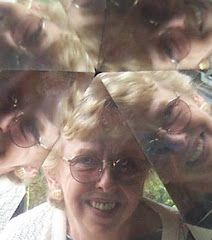Contributors to Looking Back who are also Subscribers
There are some wonderfully talented writers among the list of subscribers to this newsletter (there are probably a lot more, but I haven’t seen everyone’s writing. I would like to pay tribute to them. In all, 19 people sent in 22 essays and 2 poems that recalled history from World War II to Hurricane Katrina. One even sent an essay about one of the future challenges I wrote about concerning health problems that we face in the new Century—eating disorders. That disorder seems to be a growing trend, and a worrisome one for all parents of teenagers, especially girls.
The book’s contributors are listed in alphabetical order:
Dave Beckes wrote a great article about what it was like to have been brought up in a segregated world, then to suddenly join the integrated society of military life. Dave manages to capture a snapshot of being exposed to people different from him after he joined the military during the Vietnam War, and recalls how racism sometimes filtered into their lives even while in faraway ports. He also poignantly describes serving aboard ship just off the coast of Vietnam, and how he hesitated to get acquainted with some Marines onboard after one he became friendly with failed to returned from a mission into the thick of war.
Bill Chatham recalls in his essay that he wasn’t all that interested in history until he had raised “four new history deficient people.” Then he remembers someone saying one day, “Everyone remembers where they were the day Kennedy died,” and he realized he did. He recalls sharing some significant historic moments while gathered around a card table with friends, and how that helped him realize the importance of all he had lived through.
Nola Rae Lewis remembers graduating from high school just as World War II ended, and then meeting her husband in college, which he was attending as a veteran returning from the War. She relates the contribution to their lives of the Serviceman’s Readjustment Act, which was passed to help those who fought in that War return to civilian life. She recalls that the Veteran’s education bill paid for her husband’s education, and a Veteran’s Administration loan helped them buy their first home.
Maria Russell remembers the devastating effect of Hurricane Katrina. She and her husband had just settled down in Bay St. Louis, Mississippi after years of living aboard a boat and traveling along the coasts of the United States while raising their kids. Hurricane Katrina destroyed their two-year-old home, leaving nothing but a couple of pilings standing. She recalls returning after having evacuated ahead of the storm, and helping neighbors clean up, then getting a 5th-wheel and truck and once again becoming nomads. Maria also recalls a bit of humor as well as the generosity of ordinary people when she went into a store to purchase a cosmetic product following the hurricane.
Rev. Barry Zavah captures the essence of growing up as a baby boomer in an “Ozzie and Harriett world,” then in less than a decade, being confronted with a drastically different existence. In his words, “ America went from the music of Little Stevie Wonder and The Beach Boys to acid rock; bobby sox to mini-skirts; June Cleaver to woman’s lib; segregation to black power; turbo props to moon landings.” On television, he witnessed images of the civil rights movement, the Vietnam War, riots, and assassinations, all within the space of a decade. He recalls a lifetime of a Boomer’s memories in his essay.
If I’ve left anyone out, please let me know.
The wonder of it all
One of my main reasons for writing this book was because I realized the influence television has had on the Boomer generation, and the effects of seeing all the startling images flashed on screens in living rooms, night after night. Those around from the ‘40s to the ‘70s witnessed the violence, turbulence, political upheaval, and other disturbing scenes that seemed without end. And then we watched with amazement as the first astronauts landed on the moon and stepped out onto its surface. What a thrill to see that historic moment!
The world has changed drastically since the ‘40s. Who would have thought following World War II that in only a few years, our domestic tranquility would be challenged by issues like integration and civil rights?
Integration was a big deal for those of us born before the early ‘70s and who had previously lived segregated lives. And yes, I realize there are still areas of our country that are segregated to this day! But even those people who live in segregated communities are used to now seeing all races living, working together, and getting along in movies and on TV. I can remember when there was a huge uproar in the ‘60s because a white female singer, Petula Clark, touched the arm of black singer, Harry Belafonte, while performing on television together. That was the first physical contact between a man and woman of opposite sexes on television.
In the book, I cover the integration crisis at Little Rock Central High School because I was a student there at the time. We students weren’t concerned that black kids would be going to school with us. Our lives focused on ourselves, like most teenagers. Clothes (poodle skirts or matching sweaters and straight skirts, penny loafers or saddle oxfords, and bobby sox) and hair (ponytails and duck tails) consumed the attention of the girls.
I doubt that the boys were thinking much about what to wear, but their hair was obviously a concern because they all began sporting flat tops and crewcuts. Most had sports on their mind, just like now. We were all captured by the new music, rock ‘n’ roll, and anxious to learn the newest dance craze. We went to the drive-in movies to watch the latest movies under the stars and to mingle with friends at the snack bar. That was our lives, in a nutshell. I’m sure some kids I went to school with were racists, but in a mix of more than 2000 students, I didn’t know them personally and didn’t witness any violence.
To suddenly be confronted with mobs of racists outside the school seeking to prevent integration was horrifying to most of us, just as it was to the nation and world that watched the scenes unfold on television. But we students kept our mouths shut because we were afraid—of what, we weren’t sure. We didn’t even talk among ourselves about the conflict. Emotionally, we were still children, prematurely faced with grown-up realities that most of us had never been exposed to, or had expected to face. This drama hadn’t been listed in our instruction book for growing up.
But, we made it through, just like most of our generation who didn’t either get killed in Vietnam or wasted by drugs in the ‘60s. Now, some of us are talking about what happened back then at Central High, and in the world at large. The crisis at Central changed my life, and I write about that. Two excellent essays appear in the book about Central High that year of 1957/58.
Because of television, everyone living now was a part of history as no other generation in history has been. We were sometimes ashamed, sometimes astonished, and sometimes horrified and saddened by what we saw, but I somehow think it strengthened those of us who survived it all.
The book is at the publisher’s and I’ve already approved the cover design. The design is outstanding, and I think all the contributors will be pleased when they see it. Many different stories appear in the book, and some come from different viewpoints. But then, they all reflect the diversity and fortitude of Americans at large. That’s what makes this country great! We lived it, we survived it, and now our stories are about to come out in print!
I’ll email subscribers when it is printed and ready for sale.
Thursday, August 02, 2007
Subscribe to:
Post Comments (Atom)


No comments:
Post a Comment